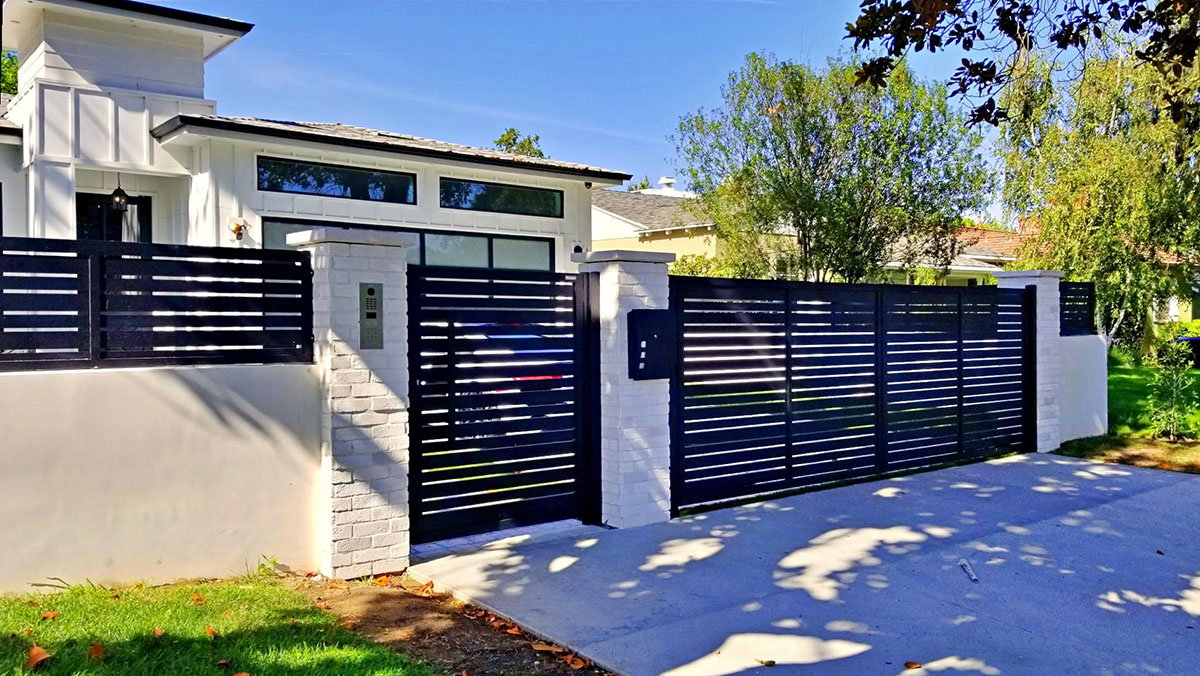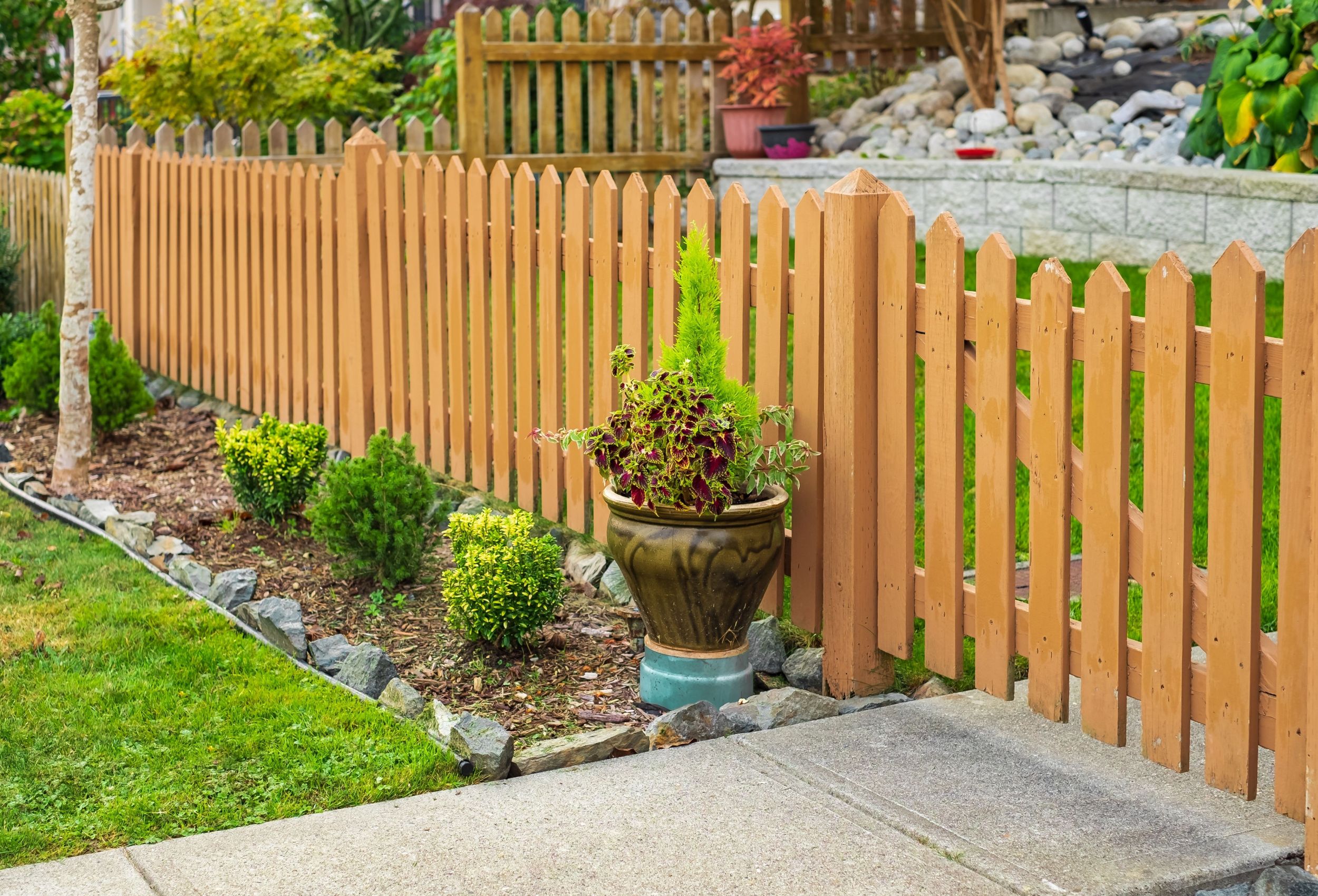Featured

When it comes to selecting the best fencing product for your home, aluminum, plastic, and wood are amongst the most popular options. Each material offers distinct advantages that fit different demands, choices, and budget plans. Understanding the benefits and drawbacks of each kind can aid you make an informed choice based on your top priorities, whether that's aesthetic appeal, durability, or maintenance needs. Listed below, we damage down the advantages and disadvantages of these 3 typical fencing materials.
Timber Fencing. Pros:
Visual Appeal: Timber fencings give an all-natural, timeless look that enhances most sorts of landscape design and architecture. They can be conveniently tailored with paint or tarnish, offering you the flexibility to develop the ideal color and finish for your residential or commercial property. Versatility: Timber can be utilized to create a selection of fencing designs, from typical picket fencings to extra modern styles like personal privacy fences or rustic ranch-style fencings. If your requirements alter, it's easy to include or change to over time. Affordability: Timber is generally more inexpensive than vinyl or light weight aluminum, making it an appealing choice for homeowners on a spending plan. The initial price of a wood fencing is typically less than the various other materials. Cons:

Upkeep Needs: Timber fences call for normal maintenance, consisting of staining, sealing, or painting to safeguard them from weathering, rot, and insect damages. Without correct care, wood can deteriorate rapidly. Durability: Wood is prone to damage from pests like termites, and it can warp, fracture, or split gradually due to exposure to the aspects. In areas with extreme weather problems, wood might require to be replaced more often than various other products. Limited Life expectancy: While wood fencings can last for several years with correct treatment, they typically have a much shorter lifespan than plastic or aluminum fencings. Plastic Secure fencing. Pros:
Reduced Maintenance: Among the most significant advantages of plastic fence is its reduced upkeep needs. Unlike wood, vinyl doesn't require to be painted, stained, or sealed. It's immune to fading, fracturing, or warping, making it ideal for property owners that want a convenient fence. Toughness: Vinyl fences are very long lasting and immune to the components, including UV rays, rainfall, and moisture. They're additionally unsusceptible pests, such as termites, that can damage timber fences. Range of Styles: Plastic fences come in a large range of shades and styles, and many imitate the appearance of wood without the maintenance disadvantages. You can select from personal privacy fences, picket fences, and more to suit your demands. Lengthy Lifespan: With proper treatment, plastic fencings can last years, far longer than timber fences, and they include warranties that give peace of mind. Cons:
Higher First Price: While plastic fences can conserve cash on upkeep over the years, they tend to have a greater in advance price than timber fences, which might be a deterrent for some customers. Limited Modification: While vinyl fences are available in a selection of styles and shades, they do not have the personalization adaptability that timber provides. You're limited to the pre-designed panels offered, which might not suit every special aesthetic. Potential for Fracturing in Cold Climates: In severe cold temperatures, vinyl fencings can come to be fragile and may break under effect, making them less suitable for locations with freezing winter seasons. Light weight aluminum Fencing. Pros:
Durability and Strength: Light weight aluminum is a light-weight yet strong material that withstands corrosion and rust, making it suitable for seaside locations or locations with high moisture. Light weight aluminum fencings require marginal upkeep and can withstand the elements for numerous years. Aesthetic Appeal: Light weight aluminum fences supply a streamlined, modern-day look. They can be found in a selection of decorative designs and can be utilized to create a more modern or stylish appearance for your property. Reduced Upkeep: Aluminum fences don't need paint or securing, and they're resistant to rust and deterioration, making them incredibly reduced maintenance with time. Protection: Light weight aluminum fencings provide a higher degree of safety and security compared to plastic or wood fencings as a result of their sturdy building. They can be furnished with locks and gates to provide a secure limit around your home. Disadvantages:

Price: Aluminum fencings are frequently much more costly than wood or plastic fencings, both in terms of products and installment expenses. This greater cost point can be a disadvantage for budget-conscious property owners. Much Less Personal privacy: Aluminum fencings usually have a more open layout, with pickets spaced apart to enable exposure with the fence. If privacy is a priority, this may not be the very best option for your property. Prone to Denting: While light weight aluminum is rust-resistant, it can still be dented or bent if struck with force, such as by an automobile or hefty tools. While it won't corrosion, it could not retain its beautiful look if it gets damaged. Which Material is Right for You? Choosing the most effective fencing material depends upon your certain demands, budget plan, and long-lasting plans for your home. Wood might be your best choice if you value aesthetic customization and are prepared to keep it regularly. Vinyl might be the suitable option if you choose low-maintenance longevity and are eager to invest a little bit a lot more in advance. On the various other hand, if you need a resilient, safe and secure fence with a sleek appearance, aluminum could be the ideal material for you.
Inevitably, consider your environment, maintenance preferences, and visual desires when choosing on your fencing material. Each option has its weak points and staminas, yet with the right treatment and installation, all three can provide attractive and trusted boundaries for your property.
Latest Posts
Add Comfort and Personality to Your Home with Area Rugs
Published Apr 20, 25
1 min read
Unlock Greater Profits with WyHy Cash Market Accounts
Published Apr 20, 25
1 min read
Roof for Extreme Weather Condition-- Preparing Your Chicago Home for Winter Season
Published Apr 20, 25
1 min read
More
Latest Posts
Add Comfort and Personality to Your Home with Area Rugs
Published Apr 20, 25
1 min read
Unlock Greater Profits with WyHy Cash Market Accounts
Published Apr 20, 25
1 min read
Roof for Extreme Weather Condition-- Preparing Your Chicago Home for Winter Season
Published Apr 20, 25
1 min read